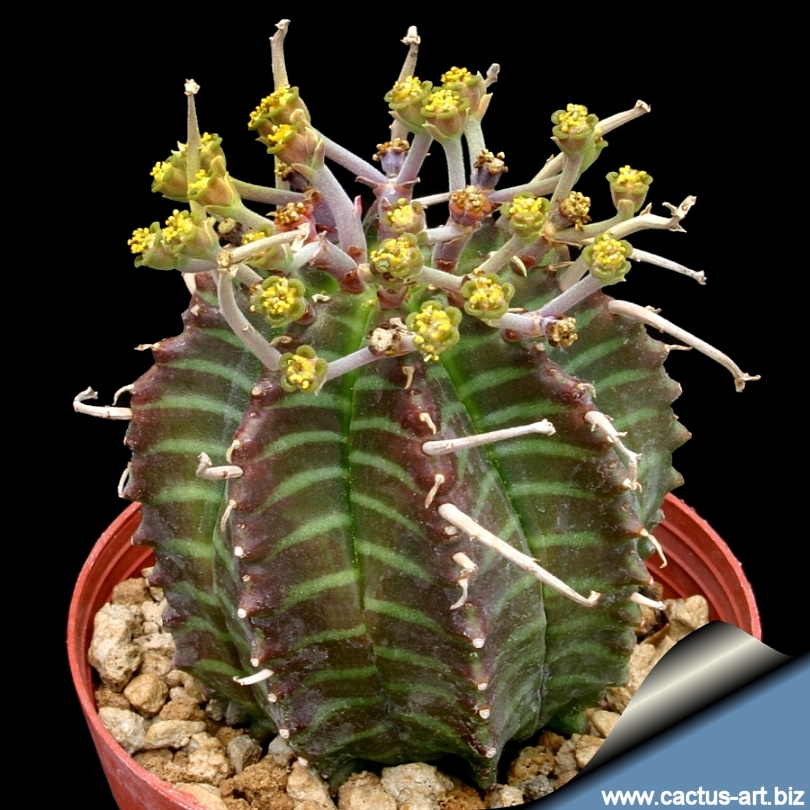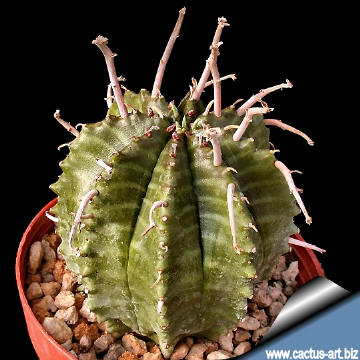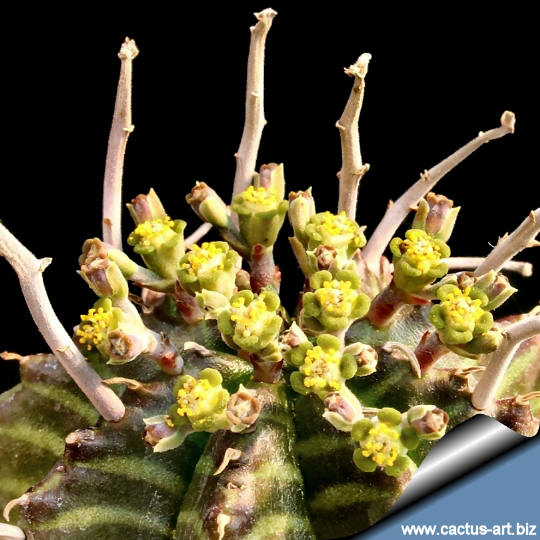|
|
|

Similar to E. obesa but with long and persistent flower stalks.
|
 |
Description:
E. meloformis has round green and purple banded, spineless stems
with 8 to 12 ribs. It occasionally
offsets from the base. It is very similar in look to
E. obesa,
but with small yellow flowers on long peduncles which dry and persist on
the plant after blooming, It is quite common in cultivation, though less
so than its relative E. obesa. Both species need male and female plants in
order to set seed.
The plants in the wild differ from one population
to another, but also from one plant to another. This has caused much
confusion. And on top of this there is a very closely related 'species'
growing nearby, Euphorbia valida, which is now considered a subspecies of
E. meloformis.


|
|
Advertising
|
|
|
|
|
Family: Euphorbiaceae
Scientific name:
Euphorbia Meloformis Aiton 1789
Origin:
This species originally
came from three geografically separated distribution-areas.
The
type locality is near the Zwartkops River, north-west of Port Elizabeth
in the vicinity of the ocean. A second distribution-area is found over a
hundred km to the east in the neighbourhood of Grahamstown, and again at
more than 100 km to the east of Grahamstown, a bit north of Peddie
Conservation status: Listed in
CITES appendix 2.
|
|
|
|

A male specimen (pollen producing plant).
Flowering can be achieved within 4-6 years.
Cultivation: It
likes a
sunny position. It does best in a mineral soil, and
good drainage is
essential. Water sparingly during the summer months and keep dry in
winter. It is a slow-growing long-ived plant and, once established, it
will be content in its position and with its soil for years.
It can
tolerate moderate shade, and a plant that has been growing in shade
should be slowly hardened off before placing it in full sun as the plant
will be severely scorched if moved too suddenly from shade into sun.
It is propagated from seed sown during spring or summer.
Photo of conspecific taxa, varieties, forms and cultivars of
Euphorbia meloformis.
|
|